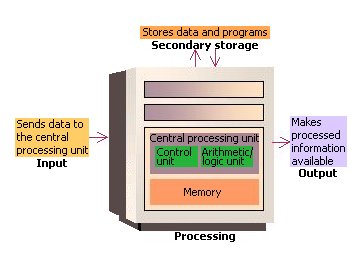The CPU, also known as the central processing unit, is a crucial component of any computer system. It is responsible for executing and managing all of the instructions and computations that enable your computer to function. But have you ever wondered where exactly all of these computations are stored?
To put it simply, the CPU does not store its computations in a single location. Instead, it relies on a complex system of memory and storage devices to manage and store its data. From registers and caches to RAM and hard drives, each component plays a vital role in ensuring that the CPU can efficiently process instructions and carry out computations. In this article, we’ll take a closer look at the various ways in which the CPU stores and manages its computations, and explore the importance of each component in this complex system.

What is the CPU?
The Central Processing Unit (CPU) is the main computing component of a computer. It is responsible for executing instructions and performing calculations. It is the brains of the computer, controlling the entire system and its operations.
The CPU is made up of several components, including the arithmetic logic unit (ALU), the control unit (CU), and the memory. The ALU is responsible for performing calculations and executing instructions, while the CU is responsible for coordinating the instructions and controlling the flow of data. The memory stores the instructions and data that the CPU needs to access.
Where does the CPU store its computations?
The CPU stores its computations in its memory. This includes short-term data and instructions, as well as long-term data and instructions. Short-term data and instructions are stored in a register, which is a special type of memory that the CPU can access at high speeds. Long-term data and instructions are stored in RAM (Random Access Memory), which is a type of memory that can be accessed at a slower speed than the register.
The CPU also stores its computations on the hard drive. The hard drive is a long-term storage device, where data and instructions can be stored for longer periods of time. The CPU can access the hard drive when it needs to access data or instructions that it needs but does not have stored in its memory. This allows the CPU to quickly access the data or instructions that it needs.
Frequently Asked Questions
The Central Processing Unit (CPU) is the main component of a computer system responsible for carrying out the instructions of a computer program. This article will answer some of the most commonly asked questions about where the CPU stores its computations.
Where does the CPU store its computations?
The CPU stores its computations in its memory, which is composed of Random Access Memory (RAM) and Read-Only Memory (ROM). RAM is a type of memory that allows the CPU to access and store information quickly and can be written to and read from. ROM is a type of memory that contains instructions for the CPU to execute and can only be read from.
When the CPU needs to access data or instructions, it first looks in RAM. If the data or instruction is not found in RAM, the CPU then looks in ROM. The CPU stores the data or instructions it needs in RAM, so it can access it quickly when it needs it. This is why RAM is important when it comes to the speed of a computer.

How a CPU Works
In conclusion, the CPU is the brain of the computer that performs all the necessary calculations and operations. It is responsible for processing data and executing instructions. The CPU stores its calculations temporarily in the registers and caches, which are located on the processor chip itself. However, for long-term storage, the CPU relies on the computer’s RAM and hard drive.
Understanding where the CPU stores its computations is vital for anyone interested in computer hardware and software. Knowing how the CPU works and where it stores its data is essential for troubleshooting and optimizing computer performance. As technology continues to advance, the CPU’s capabilities and storage methods will undoubtedly evolve, but the fundamental principles behind its operations will remain the same.



